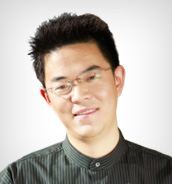阅读理解在大学英语四级考试中占有很大比重,提高阅读速度和效率是决胜英语四级考试阅读理解题的关键。为了帮助广大考生有效提高阅读速度,考试吧特整理了以下资料,供考生复习。
Computer Use in School Education
Accompanying the developments in computing as a subject for study there has been a corresponding growth in the use of the computer as an aid to teaching across the curriculum. The government offer of half-price computers led to the installation of a large number of school microcomputer systems at a time when there was very little educational software. At the same time there was an explosive demand for introductory courses, at first for secondary teachers and later, when the offer was extended to primary schools, for primary teachers. It would be impossible, and inappropriate, to make every teacher into a computer programming expert.
What the teacher needs to know is how to connect up a system. And how to load and run programs. Once these skills have been acquired the much more important topic of the evaluation of. computer-based teaching materials can be addressed.
The Unintelligent Machine
Over the past 20 years the amount of computing power available for a given sum of money has approximately doubled every two years, and it looks as if this trend will continue in the foreseeable future. On the other hand, the fundamental logical design of computers is much the same as at the beginning of this period. The revolution has been one of scale and cost rather than a change in the kinds of things which computers can do. One might have expected therefore that by now we would know the best way in which computers can be used to help with the educational process.
In the early sixties, programmed learning was looked on as the pathway to mechanize the learning process. But teaching machines of the time were inflexible and unresponsive. It was soon recognized that computers provide a much higher level of interaction with the student. Responses need not be restricted to multiple-choice button pushing, but can involve the recognition of words or numbers related to the context of the subject.
In order to present information and questions to the student and to provide for appropriate branching, depending on the responses, some form of programming language is required. COURSEWRITER and later PILOT are " author languages" which allow someone without technical knowledge of computing to prepare programs of this kind. Text and graphics can be displayed, responses analyzed, and appropriate action taken.
A tool such as this might seem to put considerable power in the hands of the teacher and yet such systems are hardly used at all in our schools. One reason is that the preparation of course material using an author language is, like that for videodisc systems, a very time-consuming business. A figure of 20 to 100 hours of preparation is quoted for each hour of student time at the computer. Such an investment is only worthwhile if the material can be used by a large number of students, and that assumes that the necessary resources in time and hardware are actually available.
There is a more fundamental reason for lack of progress in computer-based tutorial systems and this relates to the fundamental lack of "intelligence" on the part of the computer. It is easy to generate drill and practice exercises which test a student's ability to produce response. It is quite another matter to provide useful advice if the response is wrong. The human teacher has a mental model of the student and can make a reasonable estimate of why a particular wrong answer has been produced. The longer the teacher has been in contact with that student the better he or she is able to offer constructive advice. The kind of system discussed above has no such model of the student on which to make decisions, nor does it have access to the large body of subject knowledge which is held by the human teacher. Its responses therefore must be stereotyped and unintelligent.
Further evidence of the lack of machine intelligence is the failure to make computer " understand" natural language. We talk about " programming languages" for computers, but these are not languages in the ordinary sense. They are just systems of coding which provide a highly stylized way of writing down the solutions to particular sorts of problems. The tact that programs in these languages, although made up largely of English words and some well-known mathematical symbols, are unintelligible to the layC^f-ff W) reader indi¬cates the gulf which still exists between the kind of verbal instructions which can be given to another human, and the coded instructions required by the compu¬ter. One expert has argued that the construction of an intelligent machine is a logical impossibility. Many researchers in this area would dispute such a claim, but so far they cannot provide the essential demonstration to the contrary.
The development of " expert systems", which can provide advice and information on the basis of human experience which is fed into them, is one step in the direction of machine intelligence. However, such systems are limited to knowledge in a tightly defined domain, and cannot operate outside this area. Nevertheless, there may well be something here for education. The Computer in the Classroom
Where does this leave the computer as a tool for the teacher? Clearly teachers must exploit its strengths rather than complain about its weakness. However dull much drill and practice material may seem, children will often work at it for a considerable time without losing concentration. Rote learning (硬记硬背) is rightly out of favor in most educational contexts, but there are certain things which it is convenient to be able to recall instantly, and the computer can help us to remember them. The school pupil soon learns that the computer never gets tired, never loses its temper, will always respond almost instantaneously to any input, and does not display the pupil's ignorance to other people, and these factors help to provide a micro-environment within which the pupil is stable and secure.
The introduction of computers into primary schools has concentrated the minds of educators on the use of the machine as an aid to the teacher, without the distraction of computer studies as a subject in its own right. The computer is very good at storing and rearranging information, and the introduction of simple database manipulation packages has allowed teachers to present pupils with the opportunity to collect information which is of interest to them, to structure it appropriately, and to store it on the computer. From the files thus produced various reports can be generated. These packages can be used in a variety of areas of study, from history to science, and an introduction to them is now an important part of teacher education in the use of computers. Computers can also simulate (|模拟) various dynamic situations, and a number of packages exploit this ability. Even the adventure games, which are sold for amusement to home computer users, can be turned to advantage if the problem-solving aspects are emphasized and the pupils' activity is appropriately structured.
1. A computer has its limitations in the use as an aid to teaching.
2. It is likely that computers will take the place of human teachers in the future.
3. With the use of many computers in schools, the computer courses were in great demand.
4. Computers are more reliable than human teachers in many respects.
5. If focusing on problem-solving, pupils can get more amusement from the computer games.
6. There is an argument over the possibility of making computers as intelligent as human teachers.
7. The more fundamental factor that affects computer aided teaching is that it is time-consuming to prepare course materials.
8. Coursewriter and Pilot are______.
9. For constructive advice, students will have to rely on______.
10. The advantage of computer's capability of storing information has been displayed by the use of______.
I. Y 2. NG 3. Y 4. Y 5. N 6. N 7. N
8. computer languages 9. human teachers 10. database manipulation packages
相关推荐:
2010年12月英语四六级备考:阅读解题技巧 2010年12月英语四六级阅读理解解题技巧全攻略













